|
Du er her: Hjem >> BiologiskAntropologi >> Paleopatologi >> Index.php
Paleopatologi
Definition
Palæopatologi, læren om sygdomsforandringer i arkæologisk materiale. De hårde væv,
knogler og tænder, er de dele af den menneskelige organisme, der bevares bedst. Afhængigt af de fysiske
omstændigheder kan også andre væv bevares og gøres til genstand for undersøgelser, fx i mumier, der er
balsamerede, eller i moselig, idet jordbundens sammensætning kan have muliggjort bevarelse af både
bløddele og hårde væv. Palæopatologiens metoder har meget tilfælles med dem, der anvendes i antropologi
og retsmedicin.
Ved røntgenundersøgelse og direkte iagttagelse af egyptiske mumiefund kan der påvises sygdomsforandringer
i knogler, fx følger efter polio i fodknogler og tuberkulose i ryghvirvler med dannelse af pukkelryg.
I Danmark har medicinhistorikeren Vilhelm Møller-Christensen foretaget udgravninger af bl.a. Sankt
Jørgensgården i Næstved og Æbelholt Kloster og grundlagt en skeletsamling med karakteristiske forandringer
efter engelsk syge, tuberkulose og spedalskhed. Knoglefund kan også give vidnesbyrd om kirurgiske indgreb,
fx trepanation, og om behandling med efterfølgende opheling af knoglebrud.
Desuden kan hår og hud undersøges, idet indholdet af kulhydrater kan være bevaret. Med moderne
molekylærbiologiske metoder er det desuden muligt at analysere DNA, der ligeledes er meget modstandsdygtigt,
og derved påvise eventuelle sygdomsrelaterede gener heri. Ved påvisning af DNA fra mikroorganismer kan
der skabes viden om forekomst af infektionssygdomme.
Kilde: Den Store Danske (Gyldendals åbne encyklopædi)
Ressourcer
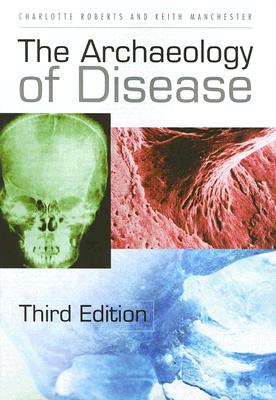
|
|
The study of paleopathology
Charlotte Roberts & Keith Manchester
Kapitel 1 af Archaeology of disease, Cornell University Press; 3 ed. (2007)
Beskrivelse af bogen:
The Archaeology of Disease shows how the latest scientific and archaeological techniques can
be used to identify the common illnesses and injuries from which humans suffered in antiquity.
Charlotte Roberts and Keith Manchester offer a vivid picture of ancient disease and trauma by
combining the results of scientific research with information gathered from documents, other
areas of archaeology, art, and ethnography. The book contains information on congenital,
infectious, dental, joint, endocrine, and metabolic diseases. The authors provide a clinical
context for specific ailments and accidents and consider the relevance of ancient demography,
basic bone biology, funerary practices, and prehistoric medicine. This fully revised third
edition has been updated to and encompasses rapidly developing research methods of in this
fascinating field.
» Læs artiklen
» Køb bogen på eLounge.com
|
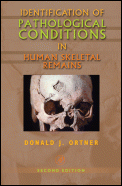
|
|
Identification of Pathological Conditions
in Human Skeletal Remains
Donald J. Ortner & Walter G. J. Putschar (1st ed.)
Donald J. Ortner (2nd ed.)
Forlagets beskrivelse:
Identification of Pathological Conditions in Human Skeletal Remains provides an
integrated and comprehensive treatment of pathological conditions that affect the human
skeleton. There is much that ancient skeletal remains can reveal to the modern orthopaedist,
pathologist, forensic anthropologist, and radiologist about the skeletal manifestations of
diseases that are rarely encountered in modern medical practice. Beautifully illustrated
with over 1,100 photographs and drawings, this book provides essential text and materials
on bone pathology, which will improve the diagnostic ability of those interested in human
dry bone pathology. It also provides time depth to our understanding of the effect of
disease on past human populations.
» Læs 1. udgave [pdf: 27,2 MB]
» Læs 2.
udgave via ScienceDirect
|
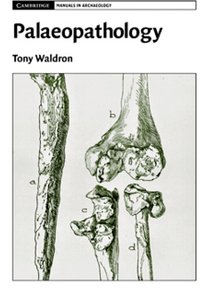
|
|
Palaeopathology
Tony Waldron
Cambridge University Press, 2009.
Forlagets beskrivelse:
Paleopathology is designed to help bone specialists with diagnosis of diseases in skeletal
assemblages. It suggests an innovative method of arriving at a diagnosis in the skeleton by
applying what are referred to as "operational definitions." The aim is to ensure that all
those who study bones will use the same criteria for diagnosing disease, which will enable
valid comparisons to be made between studies. This book is based on modern clinical knowledge
and provides background information so that those who read will understand the natural
history of bone diseases, and this will enable them to draw reliable conclusions from their
observations. Details of bone metabolism and the fundamentals of basic pathology are also
provided, as well as a comprehensive and up-to-date bibliography. A short chapter on
epidemiology provides information on how best to analyze and present the results of a
study of human remains.
» Bogens hjemmeside
» Læs bogen her
[pdf: 2,55 MB]
|

|
|
Paleomicrobiology: Past Human Infections
Didier Raoult & Michel Drancourt (Eds.)
Springer, Berlin & Heidelberg, 2008.
Forlagets beskrivelse:
"Paleomicrobiology – Past Human Infections" features the methods and main achievements in this
emerging field of research at the intersection of microbiology and evolution, history and
anthropology. New molecular approaches have already provided exciting results, such as confirmation
of a single biotype of Yersinia pestis as the causative agent of historical plague pandemics,
and the closer proximity of Mycobacterium tuberculosis from ancient skeletons to modern strains
than to Mycobacterium bovis, shedding new light on the evolution of major human pathogens and
pathogen–population relationships. Firm microbiological diagnoses also provide historians and
anthropologists with new data on which to base evaluation of past epidemics.
» Bogens hjemmeside
» Læs bogen her på academia.dk
|
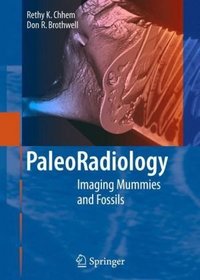
|
|
PaleoRadiology: Imaging
Mummies and Fossils
Rethy K. Chhem & Don R. Brothwell
Springer, Berlin & Heidelberg, 2008.
Forlagets beskrivelse:
Diagnostic paleoradiology is the use of X-ray studies to detect ancient diseases. The broad range
of themes and imaging techniques in this volume reflects four decades of research undertaken by
Don Brothwell in anthropology, human paleopathology, and zooarchaeology, combined with two decades
of skeletal radiology experience during which Rethy Chhem read over 150,000 X-ray and CT studies.
» Bogens hjemmeside
» Læs bogen her
[pdf: 8,1 MB]
|
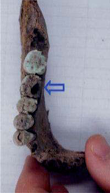
|
|
What Ancient Human Teeth Can
Reveal? Demography, Health, Nutrition and Biological Relations in Luistari
Kati Salo
Master thesis in archaeology. Department of archaeology, University of Helsinki, 2005.
Aim of the study
The main goal of archaeology is to explain how people lived in the past. One of the main study
subjects should be to study the remains of the people themselves. The aim of this study is to
show how dental remains can be used in archaeological research in Finland. This paper, which
analyses dental material from Luistari, gives one example of the possibilities. The three main
themes of the study are demography, health, and the biological relationships of the deceased.
The questions this study intends to address are the age at death and sex of the persons buried,
their diseases (i.e. dental diseases or other conditions affecting the teeth) and the genetic
relationships inside this population in comparison with other populations. The dental status
and genetic markers are also compared to grave goods. Teeth may also tell something about
nutrition and human behavior, but here these aspects are discussed only in a preliminary form.
» Læs What Ancient Human Teeth
Can Reveal? [pdf]
|

|



